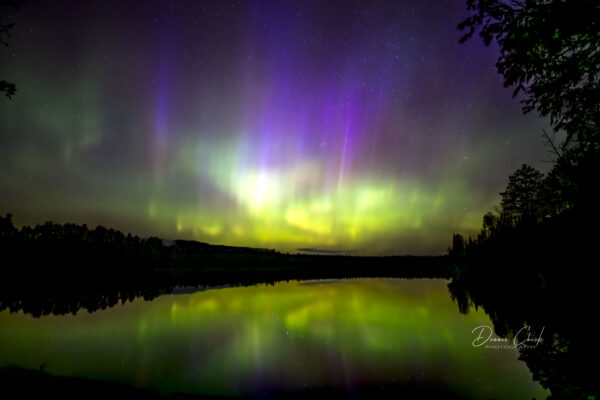Hint of fall colors arrive along the North Shore
With Labor Day weekend in the rearview mirror and mid-Sept. nearing, hints of yellow, orange, and red are arriving along the North Shore.
Many factors play a role in the timing and vibrancy of the fall color season in Minnesota, including day length, temperatures, and rainfall.
“Brilliant fall color occurs when early fall days are sunny, nights are chilly, and there is adequate rainfall throughout the growing season,” said Brian Schwingle, a DNR forest health specialist.
Typically, fall colors peak mid-to-late Sept. through Oct., beginning in the northwest regions and working toward the southeast corner of Minnesota.
While many of the leaves closer to the Lake Superior shoreline have yet to change colors as of Sept.9, the trees farther inland within the Superior National Forest and Boundary Waters Canoe Area Wilderness are a different story.
Towards the end of the Gunflint Trail and Arrowhead Trail, hints of yellow officially arrived in recent weeks, and red maples have also been observed.

Red Maple Leaf – Photo by Kalli Hawkins
Near Hovland and Grand Portage, fall colors are evident at Judge Magney State Park and Grand Portage State Park.

Judge Magney State Park – Photo by DNR

Grand Portage State Park – Photo by DNR
As Sept. continues, bright sunshine and small temperature swings will bring out the best colors possible. “We are more likely to see brilliant colors when the days are sunny and the nights are cool (between 32-45°F),” the DNR said in a press release. “Light frosts can help, but a hard freeze or early snow could stop the show in its tracks.” With a recent light frost in Cook County on Saturday, Sept. 7, and plenty of sunshine in the week ahead, the fall color outlook is favorable at this time.
The DNR said another factor contributing to the health of the trees and the brilliance of the fall landscape is the abundance of moisture during the growing season earlier this spring. “In general, the best fall colors are set up by a growing season that has average precipitation,” the DNR said.
Although much of the state experienced an excessively wet spring, which caused some leaf diseases on aspens and oaks, the DNR said it fortunately didn’t cause much leaf loss.
“Leaf diseases are about the least problematic. They are typically just an aesthetic problem,” said Schwingle. The DNR said the mild summer drought, which occurred throughout Jul. and Aug., will also enhance the colors this fall.
Find the DNR Fall Finder Map here.















